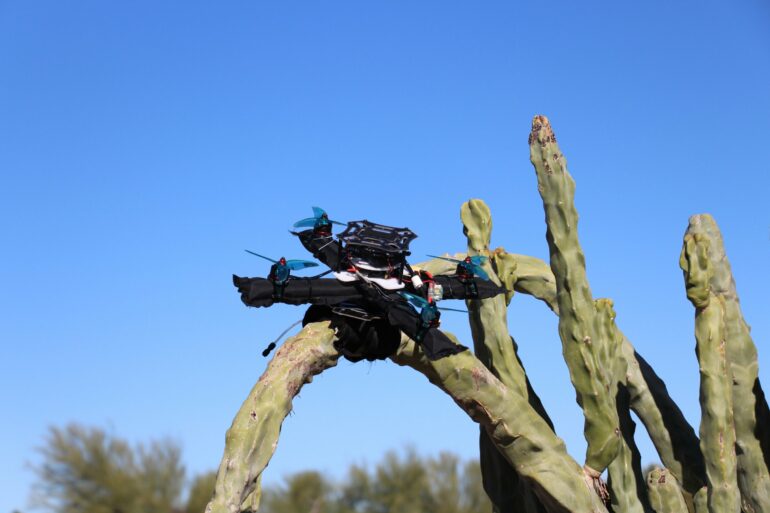Search and rescue efforts following disasters like the massive earthquakes in Turkey and Syria are a race against time. Emergency response teams need to quickly identify voids or spaces in building rubble where survivors might be trapped, and before natural gas leaks, water main flooding or shifting concrete slabs take their toll.
Advanced technology plays a vital role in these recovery operations. Thermal imaging equipment and sensitive listening devices are deployed to seek out signs of life. Small aerial drones could also survey otherwise inaccessible spaces, but the inherent fragility of current designs have limited their use.
“We see drones used to assess damage from high in the sky, but they can’t really navigate through collapsed buildings,” says Wenlong Zhang, an associate professor and robotics expert in the Ira A. Fulton Schools of Engineering at Arizona State University. “Their rigid frames compromise resilience to collision, so bumping into posts, beams, pipes or cables in a wrecked structure is often catastrophic. They don’t recover; they crash.”
Zhang says aerial drones need to endure knocks and jolts to achieve their potential for search and rescue operations. Toward that end, he and his lab team have designed and tested a first-of-its-kind quadrotor drone with an inflatable frame. Uniquely, it’s stiffness is tunable or adjustable to absorb and recover from unexpected taps and thumps. The results of their work have been published in the journal Soft Robotics.
“We need to change our focus on avoiding environmental contact. Drones need to physically interact with their surroundings to accomplish a range of tasks,” Zhang says. “A soft body not only absorbs impact forces to provide collision resilience; it also offers the material compliance necessary for dynamic maneuvers such as perching.”
Perching is an example of controlled collision. Birds technically collide with tree branches or other structures as they land and perch. Their compliant joints and soft tissues absorb the impact force, and a passive locking mechanism in their feet enables them to grasp onto irregular surfaces without using muscular energy to hold them in place.
Zhang and his team drew inspiration from this avian model to design a hybrid fabric-based bistable grasper for their new aerial drone. Bistable means it has two unpowered resting states: open and closed. It simply reacts to the impact of landing by snapping closed and securely gripping onto objects of various shapes and sizes.
“It can perch on pretty much anything. Also, the bistable material means it doesn’t need an actuator to provide power to hold its perch. It just closes and stays like that without consuming any energy,” Zhang says. “Then when needed, the gripper can be pneumatically retracted and the drone can just take off.”
This kind of contact-reactive, unpowered perching is important for sustained operations in the field. Drones can position themselves wherever required, and then turn off their rotors to conserve battery power.
Zhang says such dynamic environmental interaction can enhance the use of drones in search and rescue operations, but also for other purposes such as monitoring forest fires, aiding military reconnaissance and even exploring the surface of other planets.
“There are so many functionalities possible with conformable, reconfigurable soft aerial robots, so we hope our work here leads to even more novel, bio-inspired designs,” Zhang says.
More information:
A Soft-Bodied Aerial Robot for Collision Resilience and Contact-Reactive Perching, Soft Robotics (2023). DOI: 10.1089/soro.2022.0010
Provided by
Arizona State University
Citation:
Built to bounce back: Robotics researchers design drone to cope with collisions (2023, April 20)



